Are you looking for a list of animals beginning with T? If yes, you’re at the right place! We have a list of animal names that start with the letter T. Our list of animals includes pictures and detailed descriptions that can assist you with your research or learning.
List of Animals that Start with the Letter T
Here are the animal names that begin with the letter T, which will be discussed in this article:
- Tarantula
- Tapir
- Tortoise
- Termite
- Tetra fish
- Tree frog
- Tiger
- Toucan
- Turkey
- Tang fish
- Tick
- Tasmanian devil
- Tawny owl
- Toad
- T.rex
- Trout
- Tiger Shark
- Thresher shark
Animals that Start with the Letter T
Check out the “T” animal list with pictures and interesting facts.
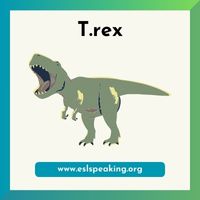
Physical Characteristics of T.rex:
- T. rex, short for Tyrannosaurus rex, was a large dinosaur with short arms and a massive head.
- Sharp, serrated teeth designed for tearing flesh.
Habitat and Era of T.rex:
- Lived during the Late Cretaceous period, around 68 to 66 million years ago.
- Inhabited North America and roamed in diverse environments, from forests to open plains.
Behavior and Diet of T.rex:
- Carnivorous, primarily preying on herbivorous dinosaurs.
- Likely had a powerful sense of smell and strong, muscular hind limbs for quick pursuit of prey.
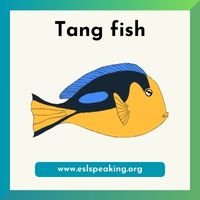
Physical Characteristics of Tang fish:
- Brightly colored, with vibrant patterns and hues.
- Typically have a laterally compressed body shape and a distinctive dorsal fin.
Habitat and Behavior of Tang fish:
- Found in coral reefs and tropical marine environments.
- Known for their social behavior, often forming schools or groups.
Diet and Reproduction of Tang fish:
- Omnivorous, consuming a variety of small marine organisms and algae.
- Some species of tang fish engage in external fertilization, releasing eggs and sperm into the water for reproduction.
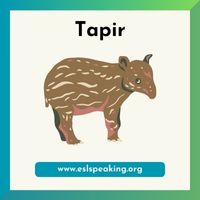
Physical Characteristics of Tapir:
- Medium to large herbivorous mammals.
- Distinctive trunk-like snout, which is actually an elongated nose and upper lip combined.
Habitat and Range of Tapir:
- Found in various habitats like forests, grasslands, and swamps.
- Native to Central and South America, as well as Southeast Asia.
Behavior and Diet of Tapir:
- Nocturnal and crepuscular, often more active during the evening and night.
- Herbivores, feeding on leaves, fruits, and aquatic vegetation.
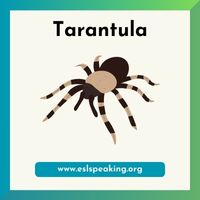
Physical Characteristics of Tarantula:
- Large, hairy spiders.
- Range in size from a few inches to several inches in leg span.
Habitat and Distribution of Tarantula:
- Found in various parts of the world, including deserts, rainforests, and grasslands.
- Create burrows or silk-lined retreats for shelter.
Behavior and Diet of Tarantula:
- Carnivorous, feeding on insects, small animals, and sometimes small birds.
- Use silk for building webs, lining burrows, and creating egg sacs.
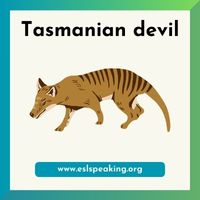
Physical Characteristics of Tasmanian devil:
- Small, stocky marsupials.
- Distinctive black fur with white markings, and a strong jaw.
Habitat and Range of Tasmanian devil:
- Native to the island state of Tasmania, Australia.
- Prefer a variety of habitats, including forests, grasslands, and coastal scrublands.
Behavior and Diet of Tasmanian devil:
- Known for their aggressive and loud vocalizations.
- Carnivorous scavengers, feeding on a variety of prey including small mammals, birds, and carrion.
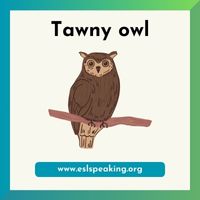
Physical Characteristics of Tawny owl:
- Medium-sized owls with a round face and large, dark eyes.
- Typically have a brown or tawny plumage, providing excellent camouflage.
Habitat and Range of Tawny owl:
- Commonly found in woodlands, parks, and gardens.
- Native to Europe, Asia, and parts of North Africa.
Behavior and Diet of Tawny owl:
- Nocturnal hunters with keen hearing and silent flight.
- Carnivores, feeding on small mammals, birds, and insects.
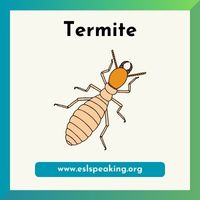
Physical Characteristics of Termite:
- Small, soft-bodied insects with a pale coloration.
- Different castes within a colony, including workers, soldiers, and the reproductive individuals.
Habitat and Distribution of Termite:
- Build nests or mounds using a combination of saliva, soil, and feces.
- Thrive in warm and humid climates, found on every continent except Antarctica.
Behavior and Diet of Termite:
- Social insects living in colonies with a highly organized caste system.
- Feed on cellulose-rich materials like wood, causing damage to wooden structures and plants.

Physical Characteristics of Thresher shark:
- Medium to large-sized sharks with a distinctive, elongated upper caudal fin (tail).
- Typically have a streamlined body, pointed snout, and large pectoral fins.
Habitat and Range of Thresher shark:
- Inhabit both coastal and open ocean waters.
- Found in various oceans, including the Pacific, Atlantic, and Indian Oceans.
Behavior and Diet of Thresher shark:
- Known for their unique hunting behavior of using their long tails to slap and herd schools of fish.
- Carnivores, primarily feeding on small fish and squid.
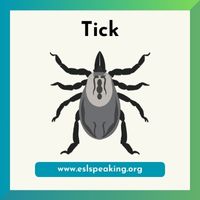
Physical Characteristics of Tick:
- Small, arachnid creatures with a flattened body.
- Have specialized mouthparts for attaching to hosts.
Habitat and Distribution of Tick:
- Found in various environments, including grasslands, woods, and even urban areas.
- Commonly distributed worldwide, with diverse species adapted to different climates.
Behavior and Diet of Tick:
- Parasitic or hematophagous, feeding on the blood of mammals, birds, and sometimes reptiles.
- Important vectors for various diseases, as some ticks can transmit pathogens to their hosts.

Physical Characteristics of Tiger Shark:
- Large and powerful sharks with a blunt snout.
- Distinctive dark stripes on their body when young, fading as they mature.
Habitat and Range of Tiger Shark:
- Inhabit both coastal and offshore waters, often near reefs.
- Found in tropical and temperate oceans around the world.
Behavior and Diet of Tiger Shark:
- Known for their voracious appetite and opportunistic feeding habits.
- Carnivores, feeding on a wide range of prey including fish, seals, and even seabirds.
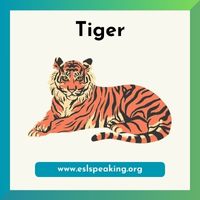
Physical Characteristics of Tigers:
- Large, powerful big cats with a distinctive orange or reddish coat.
- Have black stripes and a white belly, with a bushy tail.
Habitat and Range of Tigers:
- Inhabit a variety of ecosystems, from dense forests to grasslands.
- Native to Asia, but historical populations also existed in other parts of the world.
Behavior and Diet of Tigers:
- Solitary animals with territorial tendencies.
- Carnivores, primarily hunting ungulates like deer and wild boar.
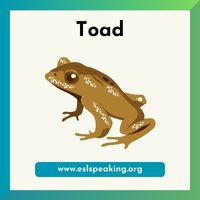
Physical Characteristics of Toad:
- Amphibians with dry, bumpy skin.
- Generally have stout bodies and shorter hind legs compared to frogs.
Habitat and Range of Toad:
- Found in diverse habitats such as gardens, forests, and grasslands.
- Adapted to both terrestrial and aquatic environments.
Behavior and Diet of Toad:
- Nocturnal creatures, often more active during the night.
- Carnivores, feeding on insects and other small invertebrates.
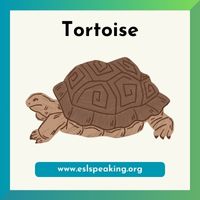
Physical Characteristics of Tortoise:
- Land-dwelling reptiles with a heavy, dome-shaped shell.
- Short, sturdy limbs with clawed feet adapted for walking on land.
Habitat and Range of Tortoise:
- Found in various environments such as deserts, grasslands, and forests.
- Native to different continents, including Africa, Asia, and the Americas.
Behavior and Diet of Tortoise:
- Herbivores, mainly grazing on grasses and vegetation.
- Known for their slow movement and the ability to retract their limbs and head into their protective shell.
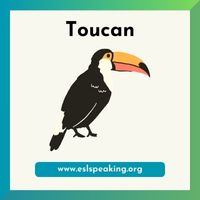
Physical Characteristics of Toucan:
- Colorful, medium to large-sized birds.
- Large, vibrant bills with distinctive markings.
Habitat and Range of Toucan:
- Found in tropical and subtropical forests.
- Native to Central and South America.
Behavior and Diet of Toucan:
- Social birds often seen in pairs or small flocks.
- Omnivores, feeding on a diet that includes fruits, insects, and small vertebrates.
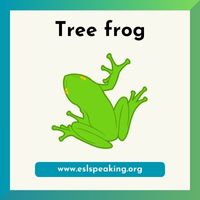
Physical Characteristics of Tree frog:
- Small-sized frogs with slender bodies.
- Typically have large, adhesive toe pads for climbing.
Habitat and Range of Tree frog:
- Found in various ecosystems, from rainforests to grasslands.
- Often associated with trees and vegetation near water sources.
Behavior and Diet of Tree frog:
- Nocturnal, being more active during the night.
- Insectivores, feeding on a diet of insects and other small invertebrates.

Physical Characteristics of Trout:
- Freshwater fish with a streamlined body.
- Typically have speckled patterns and colors.
Habitat and Range of Trout:
- Inhabit clear, cold streams and rivers.
- Native to North America, Europe, and Asia.
Behavior and Diet of Trout:
- Carnivorous, primarily feeding on aquatic insects and smaller fish.
- Known for their ability to swim against strong currents.
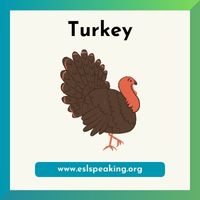
Physical Characteristics of Turkey:
- Large, domesticated birds.
- Wattles and a fleshy snood on their head.
Habitat and Range of Turkey:
- Originally native to North America.
- Domesticated turkeys are raised in various regions worldwide.
Behavior and Diet of Turkey:
- Social animals often seen in flocks.
- Omnivores, consuming a diet of seeds, insects, fruits, and small animals.
FAQs About Animals that Start with the Letter T
Here are some of the most frequently asked questions about animals beginning with the letter T.
What is the jungle animal that starts with T?
The tiger is a jungle animal that starts with the letter T.
What is a horned animal that starts with T?
The tahr is a horned animal that begins with T.
What is an Australian animal that starts with T?
The Tasmanian Devil is an animal that starts with T and lives in Australia.
What is a mammal starting with T?
Tiger and Tapir are mammals starting with the letter T.
What is a monkey that starts with T?
Tamarin is a monkey that starts with the letter T.
What is the largest T animal in the world?
Among the animals that start with the letter T, the Tiger Shark is the largest.
What is the smallest T animal in the world?
The smallest T animal in the world is the tardigrade. A tardigrade, also known as a water bear, is a tiny, water-dwelling animal with remarkable resilience, able to survive extreme conditions such as extreme temperatures, radiation, and even the vacuum of space.
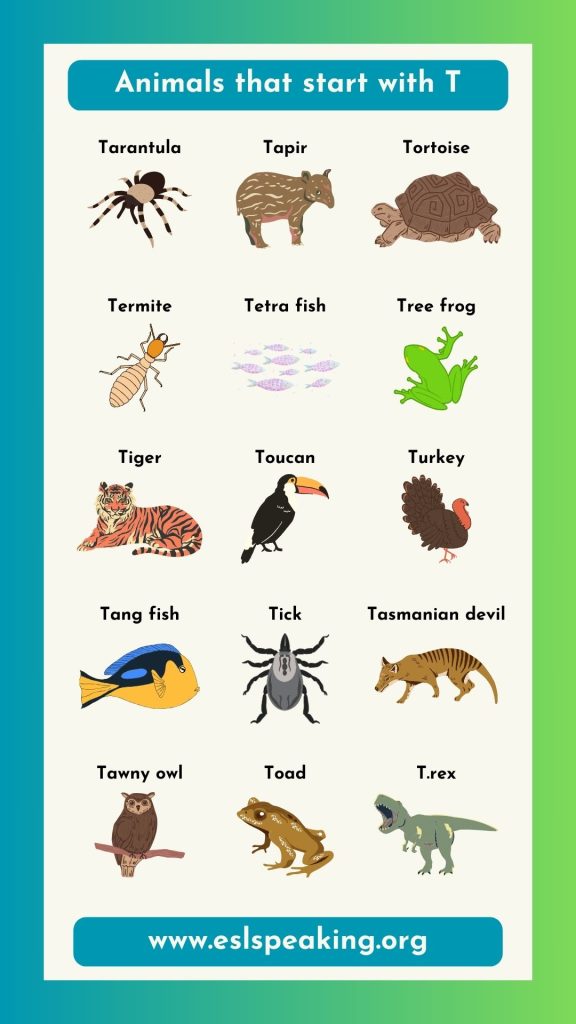
More Animal Vocabulary
If you want to check out more vocabulary list related to animals, check out the following articles:
- Animals that Start with the Letter E
- Largest Animals in the World
- Domestic Animals
- Animals that Start With N
- Wild Animals
- Animals and their Sounds
- Omnivores
- Animals at the Zoo
Animals that Start with T Online Quiz
Try out this fun quiz for animals that start with T.
Animals Beginning with T: Join the Conversation
Among all the animals that start with the letter T, which is your favourite one? Let us know in the comments. We’d love to hear from you.





Leave a Reply